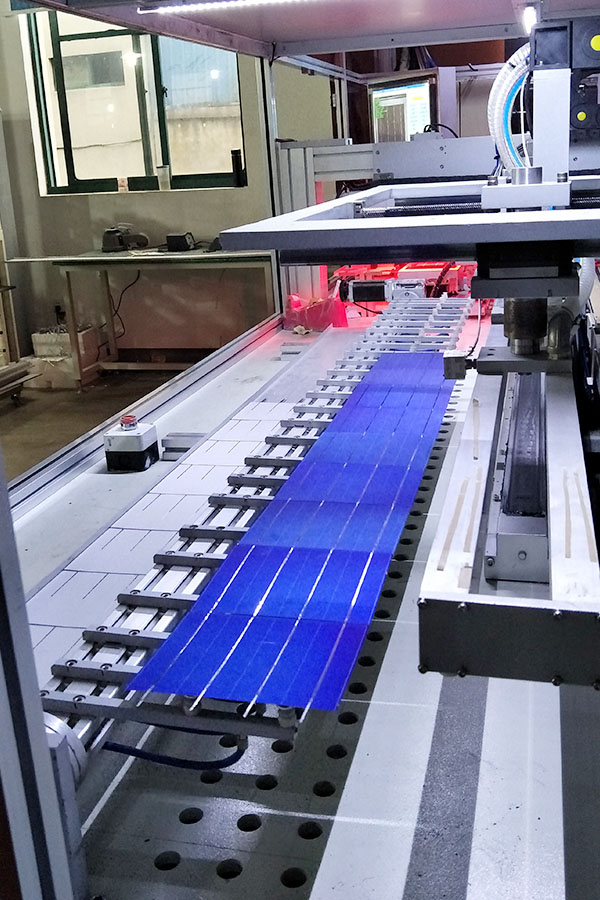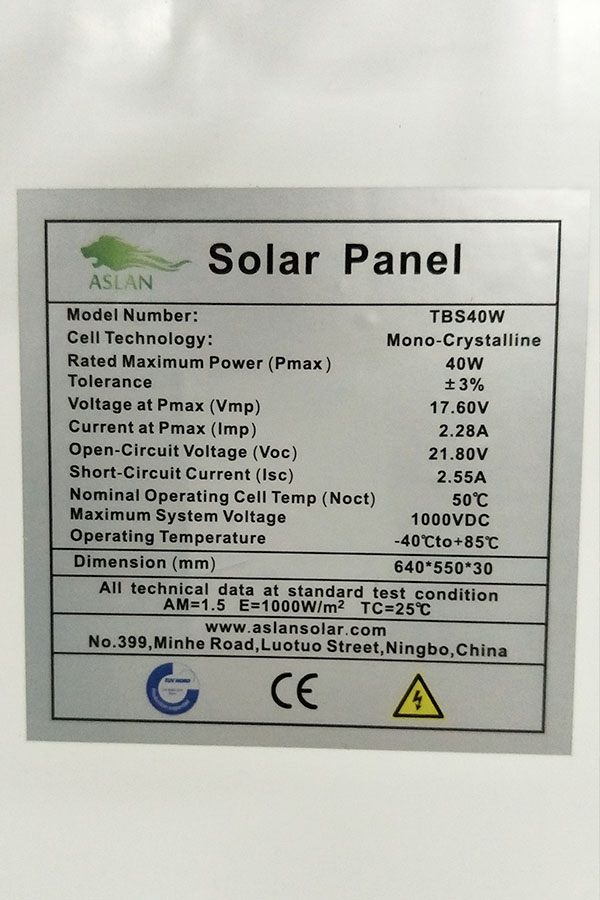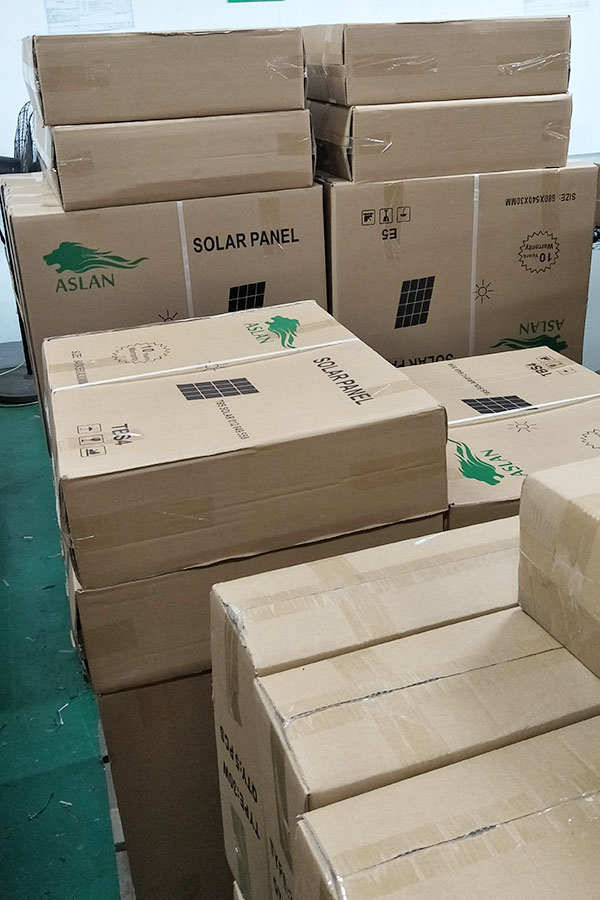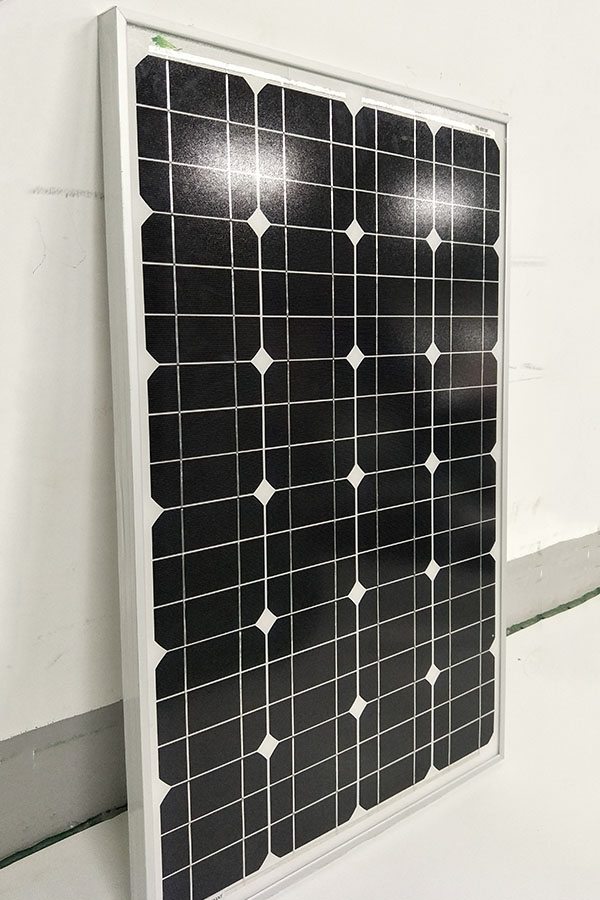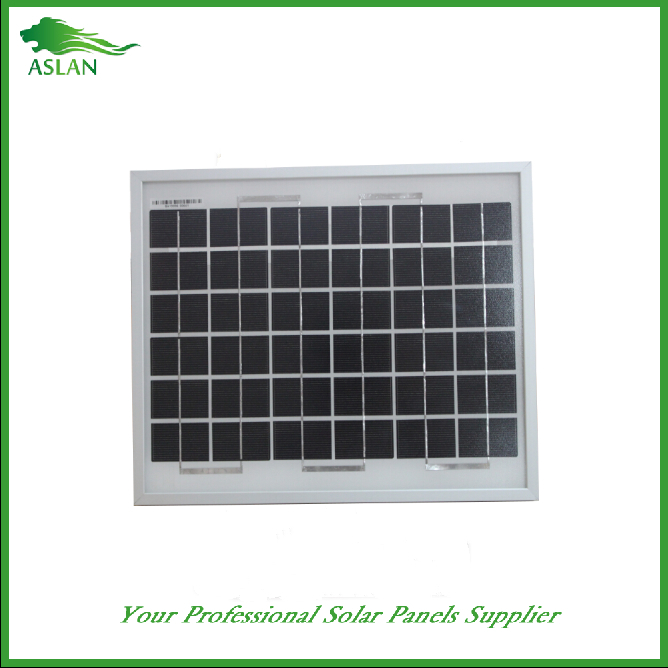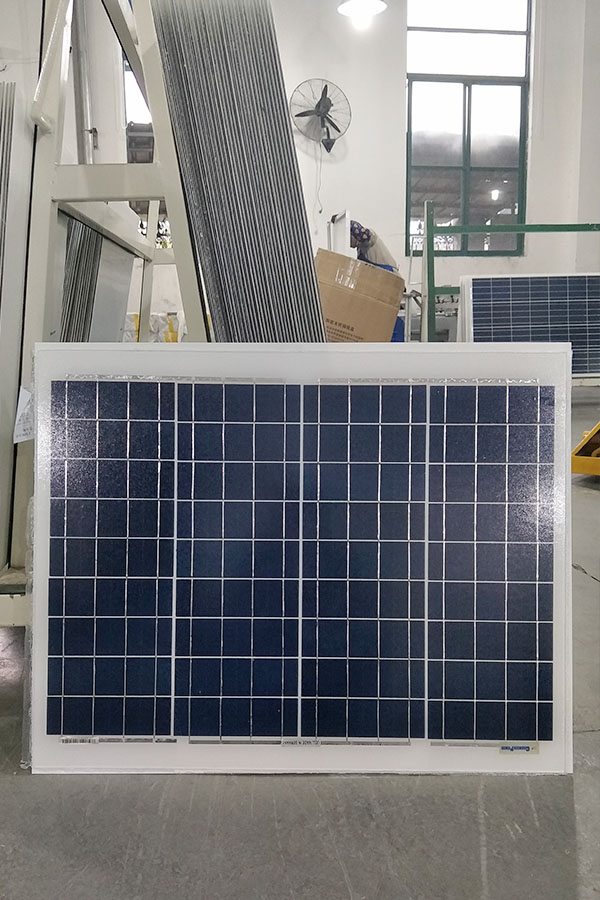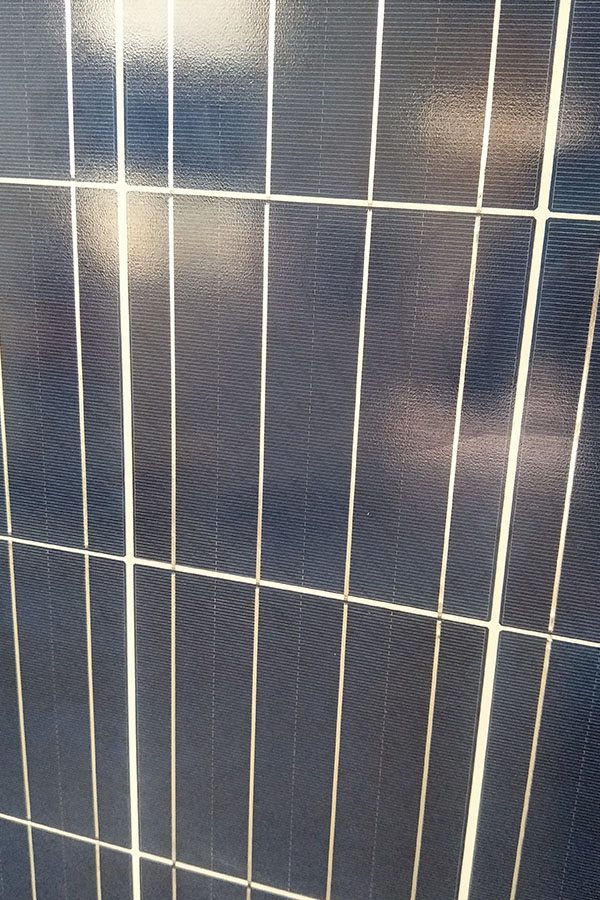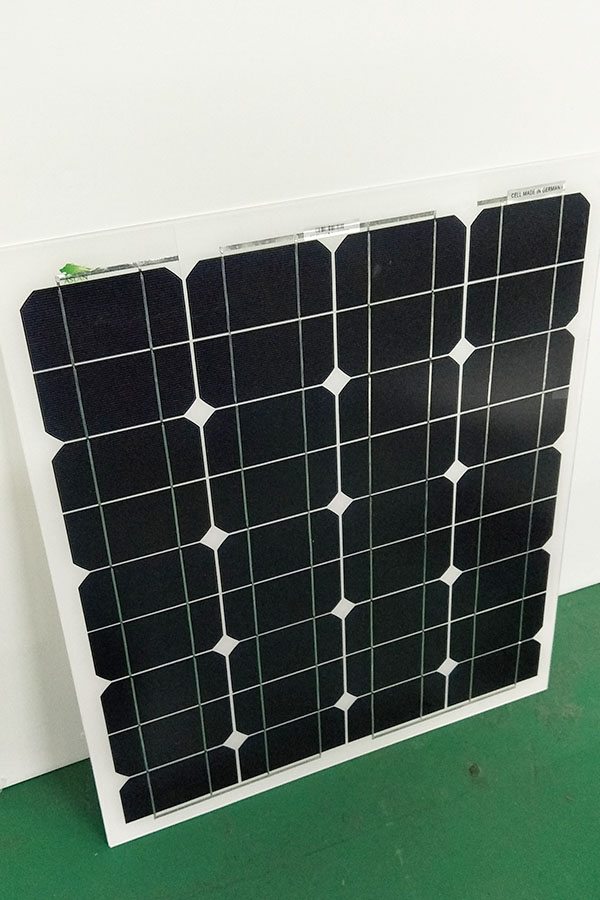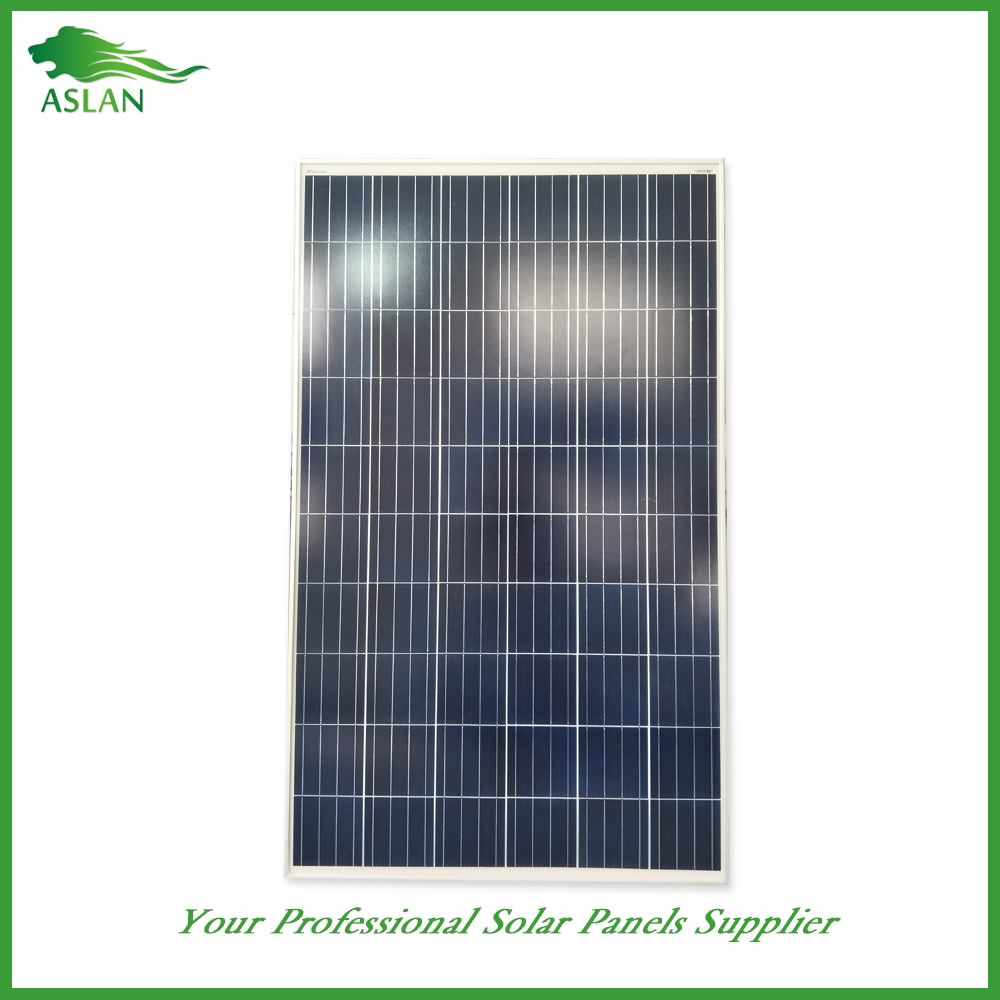Wholesale Price Poly-crystalline Solar Panel 3W for United States
Short Description:
We thinks what customers think, the urgency of urgency to act in the interests of a customer position of principle, allowing for better quality, lower processing costs, prices are more reasonable, won the new and old customers the support and affirmation for Wholesale Price Poly-crystalline Solar Panel 3W for United States, welcomes all overseas friends and merchants to establish collaboration with us. We will provide you with honest, high quality and efficient service to meet your requirements.
Poly-crystalline Solar Panel 3W
Technical parameter
Maximum Power(W) 3W
Optimum Power Voltage(Vmp) 9V
Optimum Operating Current(Imp) 0.34A
Open Circuit Voltage(Voc) 10.8V
Short Circuit Current(Isc) 0.37A
Mechanical Characteristics
Cell Type Polycrystalline
No of Cell 18 (2x9pcs)
Dimensions 145x245x18mm
Weight 0.52KGS
Front Glass 3.2mm,High Transmission, Low Iron,Tempered Glass
Temperature and Coefficients
Operating Temperature(°C): -40°C ~ + 85°C
Maximum System Voltage: 600V(UL)/1000V(IEC) DC
Maximum Rated Current Series: 10A
Temperature Coefficients of Pmax: -0.435%
Temperature Coefficients of Voc: -0.35%
Temperature Coefficients of Isc: 0.043%
Nominal Operationg Cell Temperature (NOCT): 47+/-2°C
Materials of solar panel
1).Solar Cell——Polycrystalline solar cell 156*156mm
2).Front Glass——-3.2mm, high transmission, low iron, tempered glass
3).EVA——-excellent anti-aging EVA
4).TPT——-TPT hot seal made of flame resistance
5).Frame——anodized aluminum profile
6).Junction Box——-IP65 rated, high quality, with diode protection
Superiority: high quality anodized aluminum frame, high efficiency long life, easy installation, strong wind resistance, strong hail resistance.
Features
1. High cell efficiency with quality silicon materials for long term output stability
2. Strictly quality control ensure the stability and reliability, totally 23 QC procedures
3. High transmittance low iron tempered glass with enhanced stiffness and impact resistance
4. Both Poly-crystalline and Mono-crystalline
5. Excellent performance in harsh weather
6. Outstanding electrical performance under high temperature and low irradiance
Quality assurance testing
Thermal cycling test
Thermal shock test
Thermal/Freezing and high humidity cycling test
Electrical isolation test
Hail impact test
Mechanical, wind and twist loading test
Salt mist test
Light and water-exposure test
Moist carbon dioxide/sulphur dioxide
เริ่มต้นด้วยชุดขนาด 300 วัตต์เพื่อศึกษาการประหยัดค่าไฟฟ้า
ชุดนี้ใช้แผงขนาด 300-310วัตต์ กับ อินเวอร์เตอร์ชุดนี้ สามารถประหยัดค่าไฟฟ้าได้ 30-40 หน่วยต่อเดือน ดูสินค้าที่นี่ http://ttisolarroof.com/Inverter%20on%20grid%20Single%20phase%20220Vac%20300%20W.html
Average Cost of Solar Panels for Home – Cricket Solar Toronto -866.520.6082
http://www.CricketSolar.com
No #1 solar panel authority information for your best residential solar panels deal in Ontario. Call us at 866 520 6082
You’ve most likely heard that setting up solar panels can save you money on your electrical expense, or exactly how you can even make money if you create enough power to offer back to your regional hydro business.
But is this a smart financial investment for everyone? How do you understand if solar energy is right for your house?
There are several aspects to think about when deciding whether to purchase solar panels to power your house. The most important aspects are:.
1. Which type of solar panels will you need and exactly what will the system cost?
2. When can you expect to get a return on your financial investment?
Let’s take a closer take a look at the aspects you should weigh, in figuring out whether solar energy makes sense for you.
Solar Panel Cost.
The first thing most property owners need to know is the amount of do solar panels cost?
The answer to this question depends, in part, on the type of solar panel you choose.
For useful purposes, there are two kinds of residential solar panels: monocrystalline (mono) and polycrystalline (poly).
Mono vs. Poly Solar Panels.
As their particular names imply, mono solar panels are made up of single crystals of silicon while poly solar panels are made from several silicon crystals.
The type of silicon crystals used for mono panels is ultra-pure in contrast to those used for poly panels. This distinction in the panels’ silicon purity equates into small differences in their cost, performance and roofing area requirements.
In regards to cost, mono solar panels are harder to manufacture, so they are a little bit more expensive than the polycrystalline kind.
In regards to efficiency, mono solar panels have an effectiveness rate of 15 to 20 percent, meaning they transform about 15 to 20 percent of the solar power they absorb into electrical power. Poly solar panels, on the other hand, have an average efficiency rate of 13 to 16 percent.
Due to their exceptional efficiency, mono solar panels will do a little bit better than poly solar panels on cloudy days. They are likewise more tolerant of heat, although this is normally not such a concern for homeowners in northern climes.
The greater efficiency of mono solar panels likewise indicates that they require less roof realty than poly panels. Although the distinction is limited, this can be a substantial consideration if your house has actually limited roofing area.
It’s important to bear in mind that the distinction in efficiency rate in between mono and poly solar panels is fairly little, so that is not the best deciding aspect of which type of solar panel you should choose. A better standard for leading your choice would be their relative cost.
Approximating Solar Panel Cost.
A definitive price quote of the relative cost of mono versus poly panels would require knowing how many kilowatt-hours each type of panel – as a whole system – would create over its lifetime. One kilowatt-hour (1 kWh) indicates the energy equivalent to 1,000 watts (1 kW) of energy for one hour.
Dividing the overall lifetime kilowatt-hours by the overall cost of the system (the overall dollar amount for the system of panels set up, including labor) will provide you the amount of money you ‘d be spending for each kilowatt-hour of electrical energy created.
If the warranty-backed life-span of the two kinds of panels is equal, then performing the same computation for simply the very first year will work for obtaining their relative costs.
Both kinds of solar panels usually carry a warranty ensuring a life-span of 20 to 25 years. That being stated, mono panels will normally outlive poly. So in regards to their relative cost per kilowatt-hour, the distinction could well be negligible.
AVERAGE COST OF SOLAR PANELS FOR HOME :
00:00:05 Average Cost of Solar Panels for Home
00:02:10 Solar Panels for Home Reviews
00:04:15 Solar Panels for Home Diy
00:06:21 Diy Solar Panels for Home Use
00:08:26 Solar Panels for Home Prices
Average Cost of Solar Panels for Home
http://studio4kids.tv/best-solar-panels-for-home-use-cricket-solar-toronto-1-866-520-6082/
We completely represent all following locations in Ontario, Canada:.
Greater toronto Area (GTA), toronto, Etobicoke, Mississauga, Milton, Oakville, Burlington, Scarborough, Ancaster Hamilton, Cambridge, Kitchener, Waterloo, Guelph, London, Sarnia, Niagara, St. Catherines, Markham, Vaughan, Richmond Hill, Kingston, Barrie, Thunder Bay, Sudbury, Ottawa. Contact us with questions about your location.
Average Cost of Solar Panels for Home

